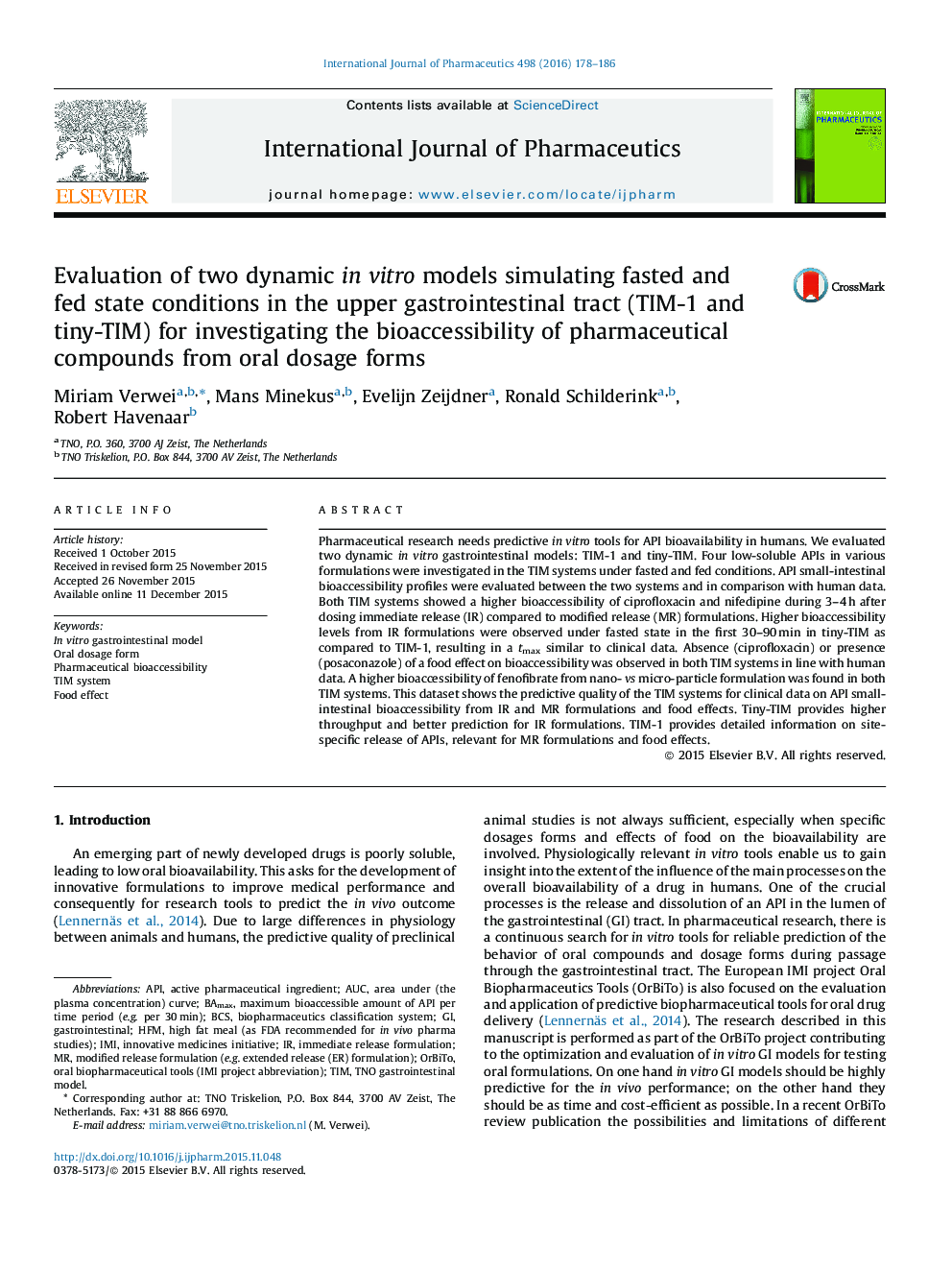| Article ID | Journal | Published Year | Pages | File Type |
|---|---|---|---|---|
| 2501122 | International Journal of Pharmaceutics | 2016 | 9 Pages |
Pharmaceutical research needs predictive in vitro tools for API bioavailability in humans. We evaluated two dynamic in vitro gastrointestinal models: TIM-1 and tiny-TIM. Four low-soluble APIs in various formulations were investigated in the TIM systems under fasted and fed conditions. API small-intestinal bioaccessibility profiles were evaluated between the two systems and in comparison with human data. Both TIM systems showed a higher bioaccessibility of ciprofloxacin and nifedipine during 3–4 h after dosing immediate release (IR) compared to modified release (MR) formulations. Higher bioaccessibility levels from IR formulations were observed under fasted state in the first 30–90 min in tiny-TIM as compared to TIM-1, resulting in a tmax similar to clinical data. Absence (ciprofloxacin) or presence (posaconazole) of a food effect on bioaccessibility was observed in both TIM systems in line with human data. A higher bioaccessibility of fenofibrate from nano- vs micro-particle formulation was found in both TIM systems. This dataset shows the predictive quality of the TIM systems for clinical data on API small-intestinal bioaccessibility from IR and MR formulations and food effects. Tiny-TIM provides higher throughput and better prediction for IR formulations. TIM-1 provides detailed information on site-specific release of APIs, relevant for MR formulations and food effects.
Graphical abstractFigure optionsDownload full-size imageDownload high-quality image (272 K)Download as PowerPoint slide
